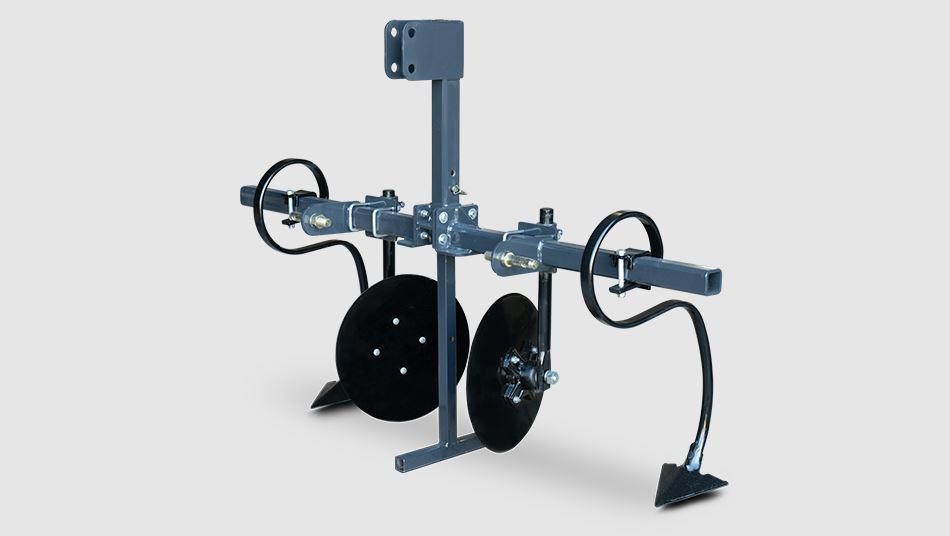Backyard farming has taken off in recent years—and for good reason. It’s rewarding, practical, and gives you control over what you eat. But when your potato plants start to sprawl or your tools can’t keep up, you may start wondering: Is it time to get better equipment?
One tool many growers overlook at first is the potato hiller. If you’ve been digging, hoeing, or bending your back to cover your plants, this simple piece of equipment might save you a whole lot of effort. And when you scale up, even a little, machines like the MK Martin Potato Hiller can start to make real sense.
Let’s explore when and why a potato hiller becomes more of a necessity than a luxury.
What Does a Potato Hiller Actually Do?
A potato hiller lifts soil and moves it around the base of the plant. Why? Because as potatoes grow, the tubers develop near the surface—and sun exposure can turn them green and bitter. Hilling keeps them protected, covered, and growing strong.
Hilling also creates deep, loose soil mounds that help the plant grow more roots and, in turn, more potatoes. You’ll get better yields, cleaner harvesting, and fewer weeds competing for space.
In small gardens, hilling by hand may be manageable. But if you’ve added even a few more rows—or plan to—it quickly becomes backbreaking work.
Is a Hiller Worth It for a Backyard Farm?
Short answer: it depends on your setup.
If you’re only growing a few plants in raised beds, a simple hoe or rake will do. But if you’re growing in rows or expanding your garden to 500–1000 square feet or more, the physical effort and time required can add up fast.
That’s where the MK Martin Potato Hiller comes in. It’s compact enough for smaller tractors, yet strong enough to hill efficiently in a single pass. Whether you’re feeding your family, a few neighbors, or just love having baskets of homegrown potatoes, this kind of tool takes the pressure off your body and saves serious time.
Signs It’s Time for a Hiller
Here are a few signs you might want to upgrade your backyard setup:
- You’ve added more rows this season
- Bending over to hill soil is straining your back
- You’ve had problems with green or exposed potatoes
- You’re battling weeds between rows
- Your old tools just aren’t cutting it anymore
If even two or three of these sound familiar, investing in a potato hiller could improve your harvest and reduce your workload.
Thinking Beyond the Hiller
If you’re doing all this work, chances are you’re moving soil, seed bags, compost, or harvest bins across your property. A solid trailer makes that easier too. Something like the Rainbow Trailers Tandem Axle Trailer helps with hauling supplies, waste, or even tools around the yard or to local markets—without needing multiple trips.
And while you’re updating your potato setup, don’t forget other useful gear like rotary tillers or rakes. One tool often leads to another, especially as your farm grows.
How to Use a Potato Hiller the Right Way
Using a hiller isn’t complicated, but a few basic tips help:
- Start Early: Begin hilling when plants are about 6 inches tall.
- Go Shallow at First: Don’t bury the plants. Just push enough soil to cover the base.
- Repeat as Needed: Hilling may be needed every few weeks, depending on how fast your plants grow.
- Watch for Rain: Wet soil hills hold better than dry, dusty ones.
With the right timing and setup, hilling becomes a quick routine, not a chore.
The Bottom Line
Backyard farming works best when your tools match your goals. If your potato patch is more than just a few plants, adding a potato hiller can make a world of difference. The MK Martin Potato Hiller is a great fit for hobby farms and mid-size gardens where efficiency and yield matter.
And if you’re handling more supplies, don’t overlook the benefits of equipment like the Rainbow Trailers Tandem Axle Trailer to make everything more manageable.
Farming doesn’t have to wear you out. With the right tools, you’ll spend less time struggling and more time enjoying your harvest.
FAQs
- When should you start hilling potatoes?
You should start hilling when the potato plants are about 6–8 inches tall. Add soil around the base of each plant to protect growing tubers and encourage stronger yields.
- Can you grow potatoes without hilling?
Yes, but skipping hilling may reduce your yield and increase the risk of green, sun-damaged potatoes. Hilling helps prevent this by keeping the developing tubers covered.
- What makes the MK Martin Potato Hiller suitable for backyard farmers?
The MK Martin Potato Hiller is compact, easy to attach to small tractors, and perfect for hobby farms. It saves time and effort while creating clean, raised rows for better potato growth.
- How often should I use a potato hiller during the season?
You typically need to hill two or three times during the growing season, depending on how fast your plants grow and the condition of your soil.
- Is a Rainbow Trailers Tandem Axle Trailer useful for small farms?
Yes, a Rainbow Trailers Tandem Axle Trailer helps transport soil, tools, compost, or harvests efficiently across your property, especially if you’re managing multiple garden tasks.
- Do You Need a Potato Hiller for Backyard Farming? Here’s What to Know
- Backyard farming has taken off in recent years—and for good reason. It’s rewarding, practical, and gives you control over what you eat.
- MK Martin Potato Hiller,Rainbow Trailers Tandem Axle Trailer
Related posts:
 Corporate Limo Service in Lakewood, TX | Jacks Limo for Business Travel
Corporate Limo Service in Lakewood, TX | Jacks Limo for Business Travel
 Reliable HVAC Repair in Rifle, CO | Smoky Hill Roofing Experts
Reliable HVAC Repair in Rifle, CO | Smoky Hill Roofing Experts
 Transforming Beauty The Best Cosmetic Surgery in All over the Pakistan
Transforming Beauty The Best Cosmetic Surgery in All over the Pakistan
 The Ultimate Guide to Wedding Invitation Templates: Style, Simplicity, and Sentiment
The Ultimate Guide to Wedding Invitation Templates: Style, Simplicity, and Sentiment
 Top Reasons Everyone’s Talking About the Syna World Tracksuit
Top Reasons Everyone’s Talking About the Syna World Tracksuit
 Corteiz Tracksuit The Power of Knowing You Belong Tracksuit The Power of Knowing You Belong
Corteiz Tracksuit The Power of Knowing You Belong Tracksuit The Power of Knowing You Belong
 Tyre Replacement Bournemouth: Keep Your Vehicle Safe and Running Smoothly
Tyre Replacement Bournemouth: Keep Your Vehicle Safe and Running Smoothly
 Why a Reputable Used Car Dealership Matters When Buying Pre-Owned?
Why a Reputable Used Car Dealership Matters When Buying Pre-Owned?







